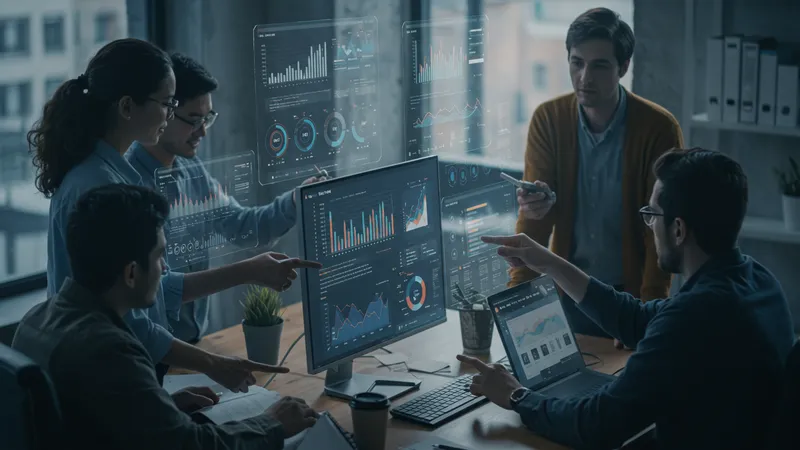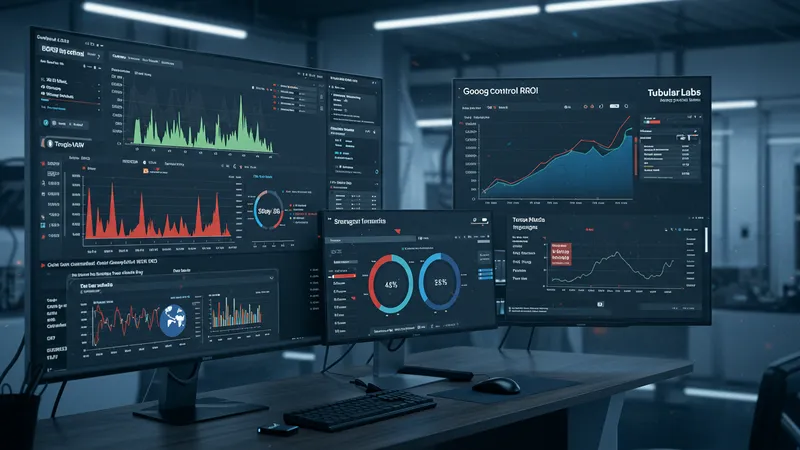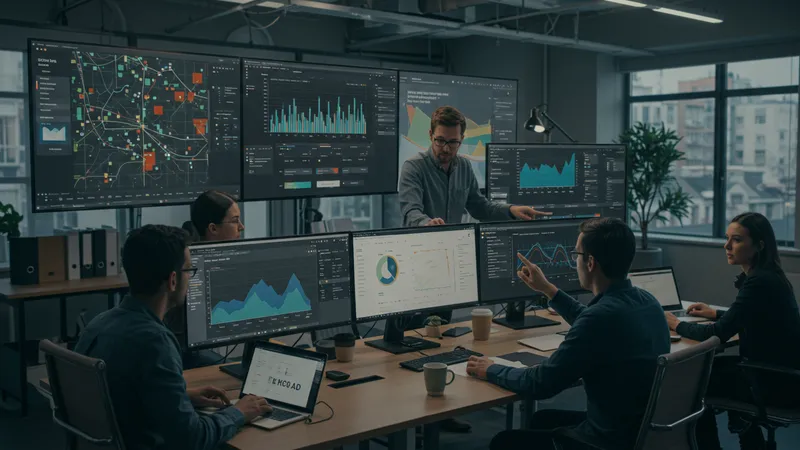

Understanding how video campaigns truly impact success has moved far beyond counting views or likes. Today, brands measuring their campaigns aim to get precise answers about how each video performs, how audiences are really engaging, and, most importantly, what actions result from these views. TrueView return on investment (ROI) builds on this need for measurable impact by marrying advanced analytics and user behavior tracking—offering marketers insights that drive more effective video strategies and smarter ad spend.
Rather than relying on assumptions, marketers now seek real evidence: how long did someone watch, what did they do next, and how did those behaviors contribute to campaign outcomes? Through a combination of video platform analytics and behavioral data, teams can attribute conversions, optimize creative, and even justify larger investments with confidence that each dollar spent is truly working to achieve the intended goals.

The adoption of in-depth video analytics brings a level of precision that empowers both creative and campaign strategy. For example, by using tools like Google Ads TrueView, marketers can drill into granular metrics such as watch time, click-through rates, and completed views—insight that reveals not just if content is being seen, but how effectively it holds attention and prompts action. This clarity cuts waste and ensures each campaign is tailored for maximum effect.
Brands leveraging tools like Tubular Labs find an edge in audience understanding. These platforms offer competitive benchmarking—allowing marketers to see how their campaigns stack up, which formats succeed, and how viewers interact across devices. As a result, strategies can evolve rapidly, targeting specific segments with reduced guesswork.
Wistia goes a step further with features like heatmaps, which visually show where engagement spikes or drops within each video. This allows creative teams to refine both message placement and call-to-action design, ensuring content resonates and drives desired outcomes. Leveraging data at this depth can be the deciding factor between an average campaign and one that demonstrably moves metrics.
Ultimately, employing advanced analytics is not just about measurement—it's about making every video campaign smarter, more efficient, and more accountable to business results. That’s why so many organizations now treat video analytics as essential, continually integrating new data to sharpen creative delivery and resource allocation. The deeper details reveal even more valuable insights ahead—next, we break down how these platforms differ in features and strategy fit.
To unlock the full potential of video advertising, it’s crucial to understand the range of analytics underpinning TrueView ROI. At the core are view-based metrics: impressions, view-through rate, and average watch time. These figures help marketers grasp surface-level engagement, but only scratch the surface of video performance. Tools like Google Ads TrueView and Wistia deliver real-time data, blending these metrics with demographic and device breakdowns for a more granular perspective.

Behavioral analytics take performance measurement much further. By examining data such as completion rates and click paths, marketers can map exactly where viewers are most engaged and where drop-off occurs. Wistia’s heatmap technology illustrates these moments visually, enabling quick creative adjustments—moving calls to action, editing pacing, or switching up visuals to sustain audience interest throughout the video.
Audience segmentation is another essential dimension. Platforms like Tubular Labs allow brands to analyze who is watching—not just how they watch. This means breaking down engagement patterns by age, geography, interest category, and more. With these insights, marketers tailor creatives and messaging to fit specific audience segments, boosting relevance and return on advertising spend.
Lastly, conversion tracking closes the loop. Integrating analytics data with post-view actions such as website visits, purchases, or lead submissions reveals how video impacts real business outcomes. Google Ads TrueView’s linking of ad exposure to conversions ensures marketers can report not only on engagement but on true commercial impact. Understanding these analytical layers provides a strategic advantage for campaign refinement.
The choice of platform can make or break a video campaign’s measurement success. Google Ads TrueView stands out for those seeking integration with large-scale ad networks and robust cost controls. Its suite combines extensive targeting options with conversion tracking, allowing teams to analyze ROI in detail and adjust budgets based on real, observed performance.

Tubular Labs shines for organizations focused on benchmarking and large-scale social video analysis. Its dashboards aggregate competitive data from platforms like YouTube and Facebook, enabling companies to see trending formats, top-performing content, and shifting audience preferences. This macro analytic lens is invaluable for brands who want to stay ahead of creative trends and sharpen their video investment strategy.
Wistia, meanwhile, offers specialized tools for content marketers aiming for direct audience engagement. Its player provides instant feedback through heatmaps and engagement graphs, allowing for data-driven tweaks at the individual video level. For brands with a heavy focus on owned media and nurturing audience relationships, this insight supports continuous content improvement and more deliberate campaign iteration.
Though differing in features and pricing, these platforms share a common goal: translating raw viewership into actionable, revenue-driving insights. Marketers should assess their own priorities—be it paid reach, social intelligence, or owned results—to determine the toolset that best supports their campaign objectives.
Effective use of analytics can transform a campaign from experimental to consistently high-performing. For instance, brands might set up A/B tests within Wistia, leveraging heatmap feedback to compare two versions of a call to action and double-down on the language or sequence that generates higher click-through rates. These results are immediately actionable and drive rapid creative iteration.

Google Ads TrueView enables similar testing through adjustable campaign settings. Marketers often experiment with different targeting options, video lengths, or bidding strategies, diving into campaign-level reports to see which variables yield the greatest conversion rates. This flexibility allows for budgets to be redirected to top-performing ads in real-time, minimizing waste and improving ROI.
Tubular Labs supports strategic alignment by identifying emerging formats favored by target audiences. For example, a brand could discover that unboxing videos are outperforming tutorials for a particular demographic, shifting their creative investment accordingly. Armed with external and competitive benchmarks, campaigns become more closely tailored to real-world trends.
These analytical approaches aren't just about fine-tuning content—they help shift overall marketing direction. The repeated process of measuring, learning, and optimizing lets brands scale their most effective tactics and deliver ongoing business impact through video.
The video analytics landscape continues to evolve at a rapid pace, driven by both technological innovation and shifting consumer preferences. Artificial intelligence is playing an increasing role, automating pattern recognition within large datasets and forecasting performance before campaigns are even launched. Soon, predictive analytics could anticipate which creative elements will spark the most engagement and conversions, multiplying TrueView ROI for proactive marketers.

Privacy changes are also influencing strategy. As data regulations tighten, platforms are adapting by offering more aggregated, anonymized analytics while still delivering actionable insights. This will require marketers to get smarter about designing measurement frameworks and integrating insights across channels for a complete view of the video customer journey.
Interactive and shoppable video formats are expected to gain prominence. Platforms like Google and Wistia are already experimenting with features enabling viewers to take direct action within the video—shortening the path from engagement to conversion. Analytics for these emerging formats will offer new touchpoints for optimization, creating even deeper connections between content and measurable outcomes.
Ultimately, the brands that commit to measurement excellence—leveraging the latest tools, experimenting with advanced features, and integrating analytics into every stage of campaign planning—will consistently unlock superior value from their video investments. TrueView ROI is not just a metric—it's a disciplined, evolving strategy for success in an increasingly visual digital world.